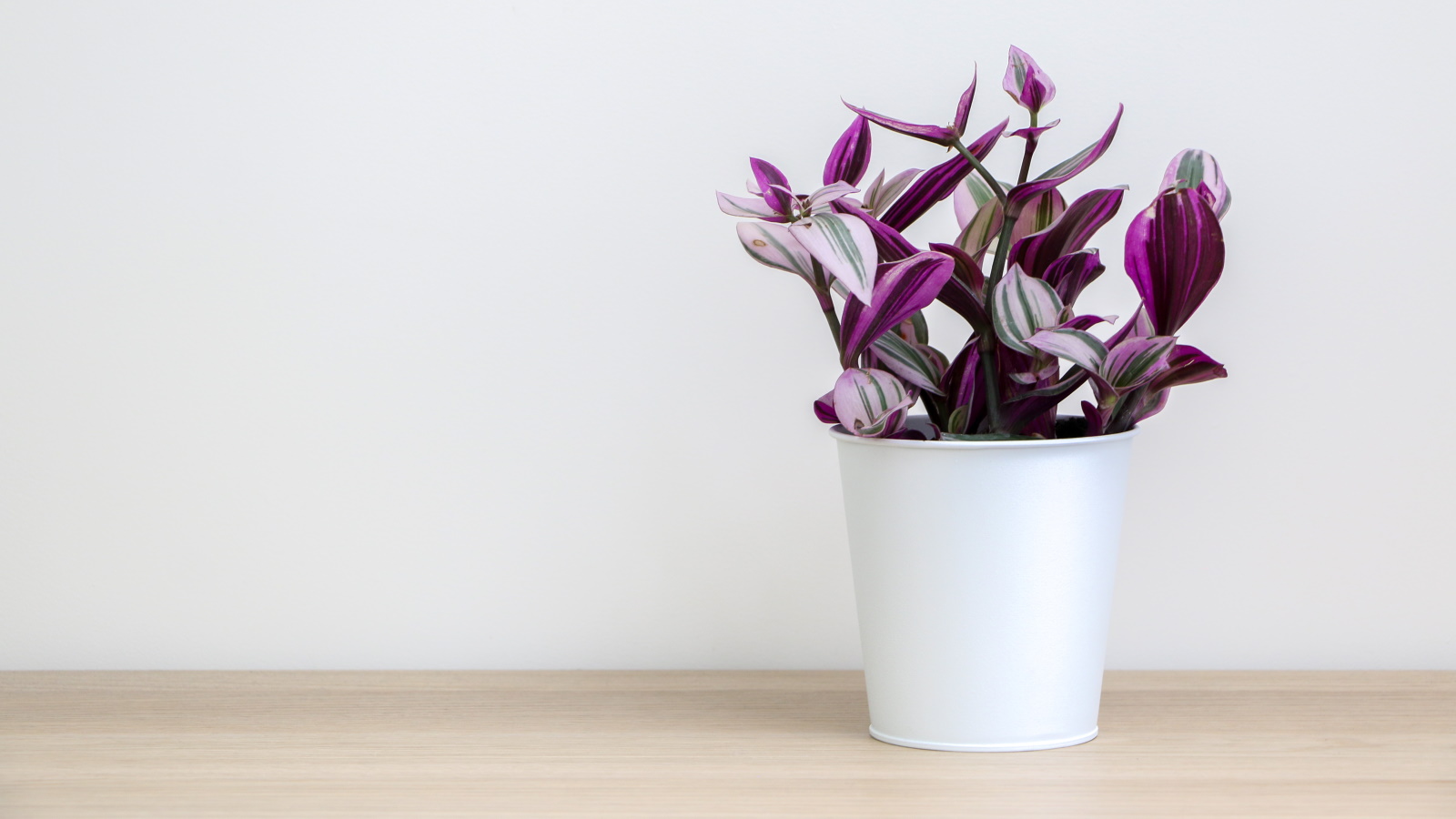
One of the best plant purchases I've made was a Tradescantia albiflora 'Nanouk' because it's one of the most low-maintenance indoor plants I've ever cared for. In fact, the combination of it's easy nature and unique, bright foliage led me to also purchasing a Tradescantia zebrina.
My favorite thing about growing tradescantia plants is that they're one of the easiest houseplants to grow from cuttings. I noticed that my tradescantias would just keep on growing and their stems were doubling in length every few days, explaining the Tradescantia zebrina's common name of inch plant in reference to its fast-growing nature. I decided to take some cuttings to propagate and it was so simple to do that ever since I haven't stopped propagating my tradescantias to gift to friends and family.
Successful propagation requires different steps for different plants, but it doesn't take too much effort to multiply your tradescantia plants. That's why I've put together an expert guide to propagate a tradescantia from cuttings, so that you can grow more of these plants for free.
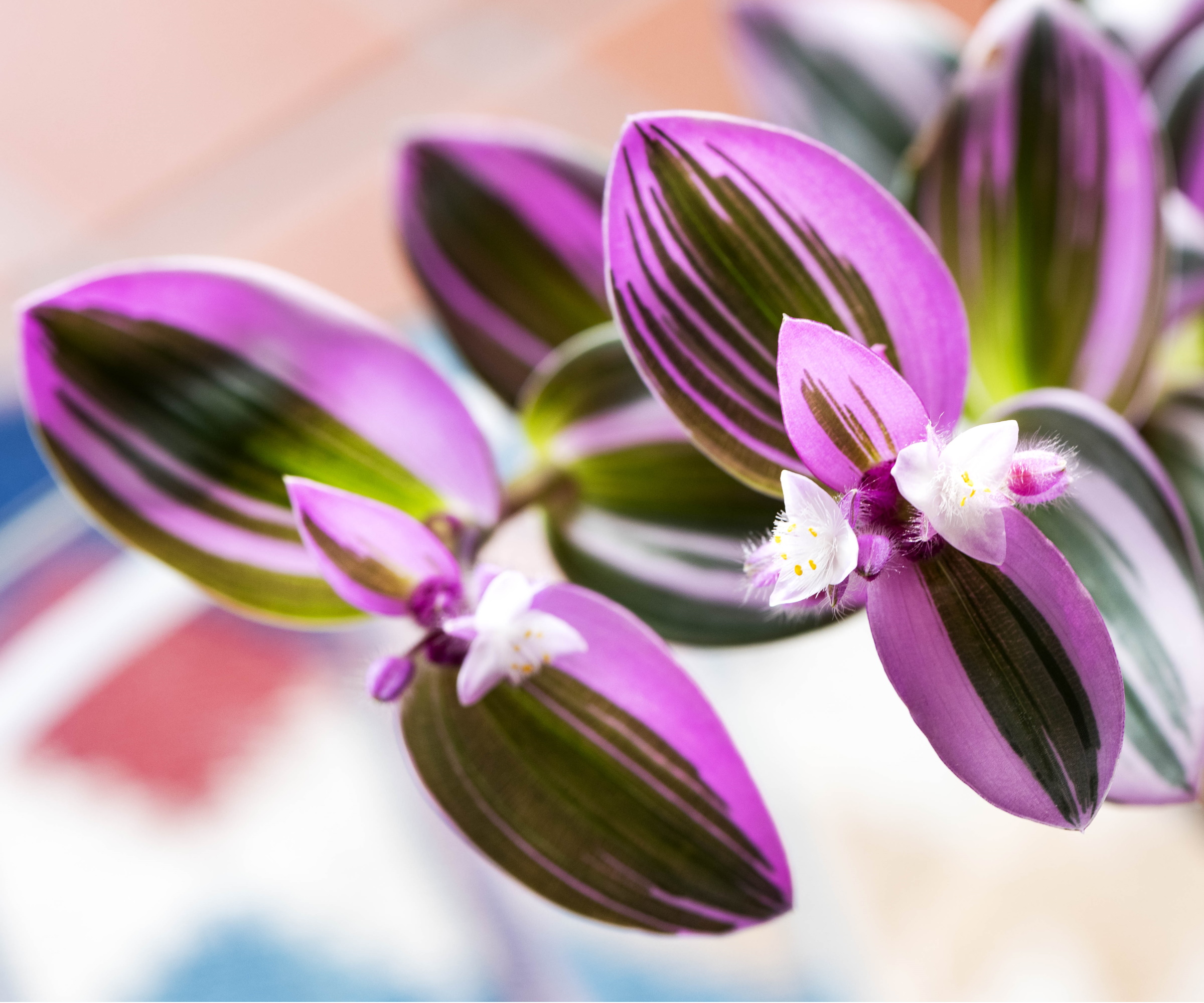
3 easy steps to propagate a tradescantia from cuttings
If you're a lover of purple plants and want to fill your indoor garden with them, propagating tradescantias might just be the best way to do it. These striking plants can be grown as trailing indoor hanging plants or you can keep pruning them to stay as small indoor plants. Whatever your desire, it's easy to keep cutting away at your tradescantia to grow more of these plants.
1. Take a cutting from a healthy stem
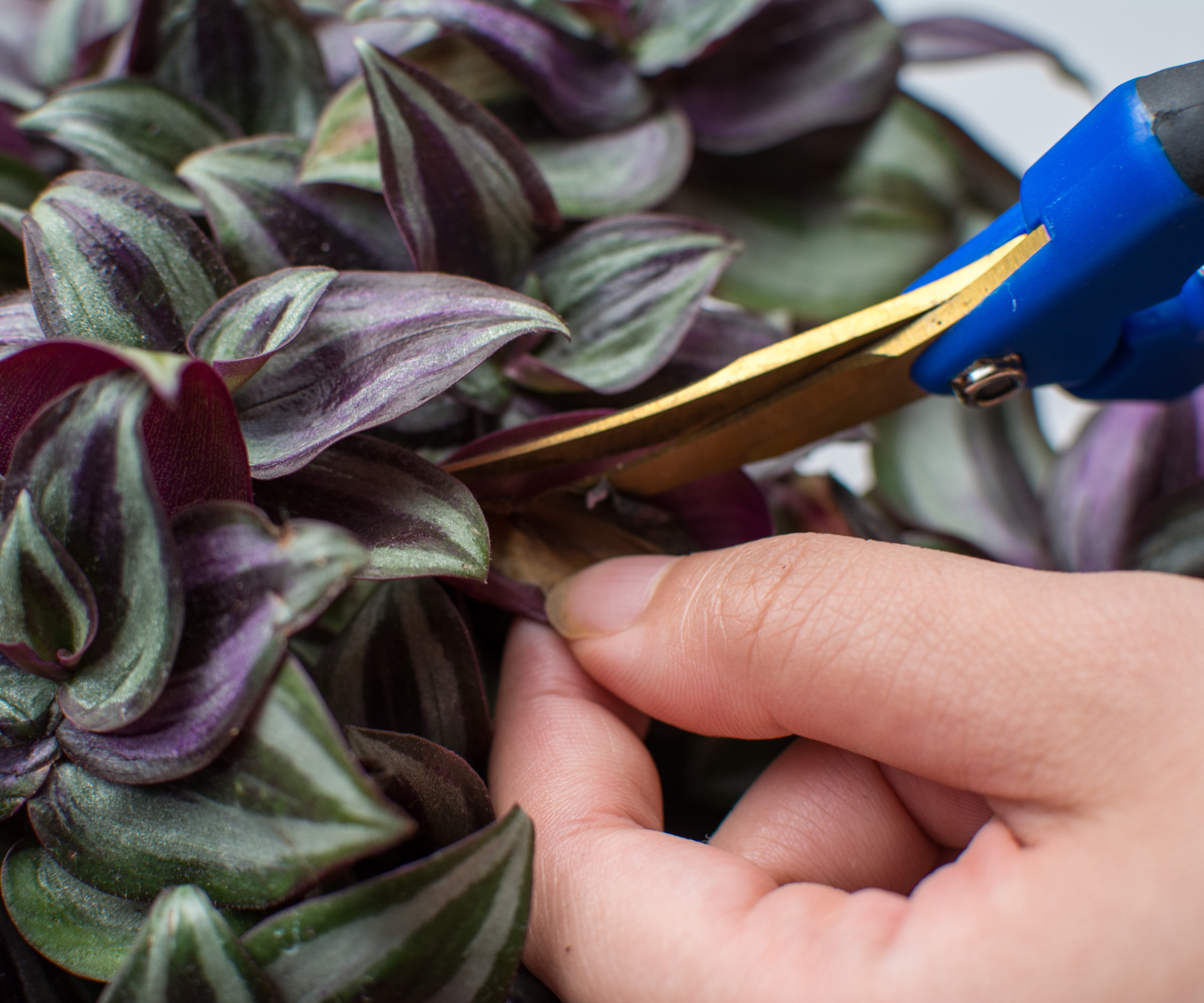
It's easy to make common houseplant propagation mistakes if you're a novice, but the key thing to know is that you need to get the cutting right before you can even start the propagation process. For tradescantias, this means choosing the right stem to cut.
'Choose a healthy stem with a robust structure and full leaves,' suggests horticulture expert and founder of Yardwork, Michael Clarke. The stem should feel firm and have multiple established leaves on it.
I like to also opt for stems that have new leaves growing, as it indicates active growth and can increase chances of successful root development. It's best to take a stem that is around 5-6 inches long.
'Take a cutting above a node, the spot where the leaves meet the stem,' says Lisa Eldred Steinkopf, houseplant expert at The Houseplant Guru.
You should always use essential gardening tools for clean and sharp cuts. I like to use small pruning snips for taking houseplant cuttings, like these gardening scissors from Amazon, to ensure I make accurate cuts. Make sure to clean your gardening tools after use to prevent the potential spread of pests and diseases.
2. Prepare your tradescantia cutting
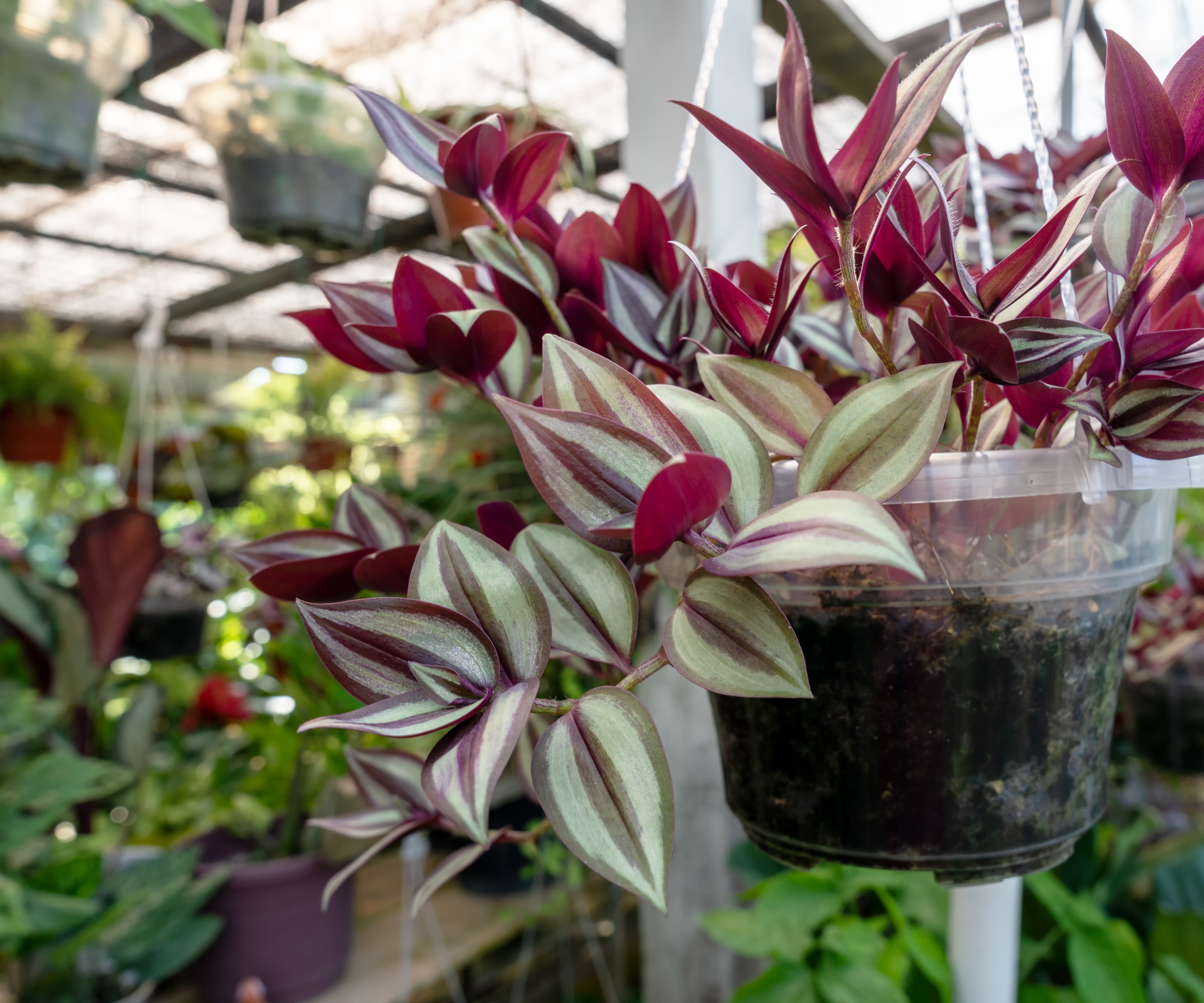
Now that you have your cutting, you need to make sure it's ready for propagation. When I was new to propagation, I soon learned that failing to do this can hinder root development.
Propagation preparation includes cleaning your cutting, in the form of removing any unnecessary leaves. Whether you're planning to grow your cutting in water or soil, leaves that will sit beneath the surface are redundant in the propagation process. Leaving them attached to the stem will cause the leaves to rot and waste energy on keeping those leaves alive rather than direct energy towards root development.
It's easy to remove leaves - I choose to gently pinch them off with my fingers. However, if you're looking for more precision, you can use these micro-tip pruning snips from Amazon.
This is also the point where you might choose to use a rooting hormone - a substrate that contains nutrients and chemicals that encourage roots to grow by replicating the hormones in the plant responsible for root development. It involves just dipping the end of your cutting in a rooting hormone powder, available at Amazon.
However, this isn't a necessary step to take because tradescantias root very easily.
3. Place the cutting in soil or water
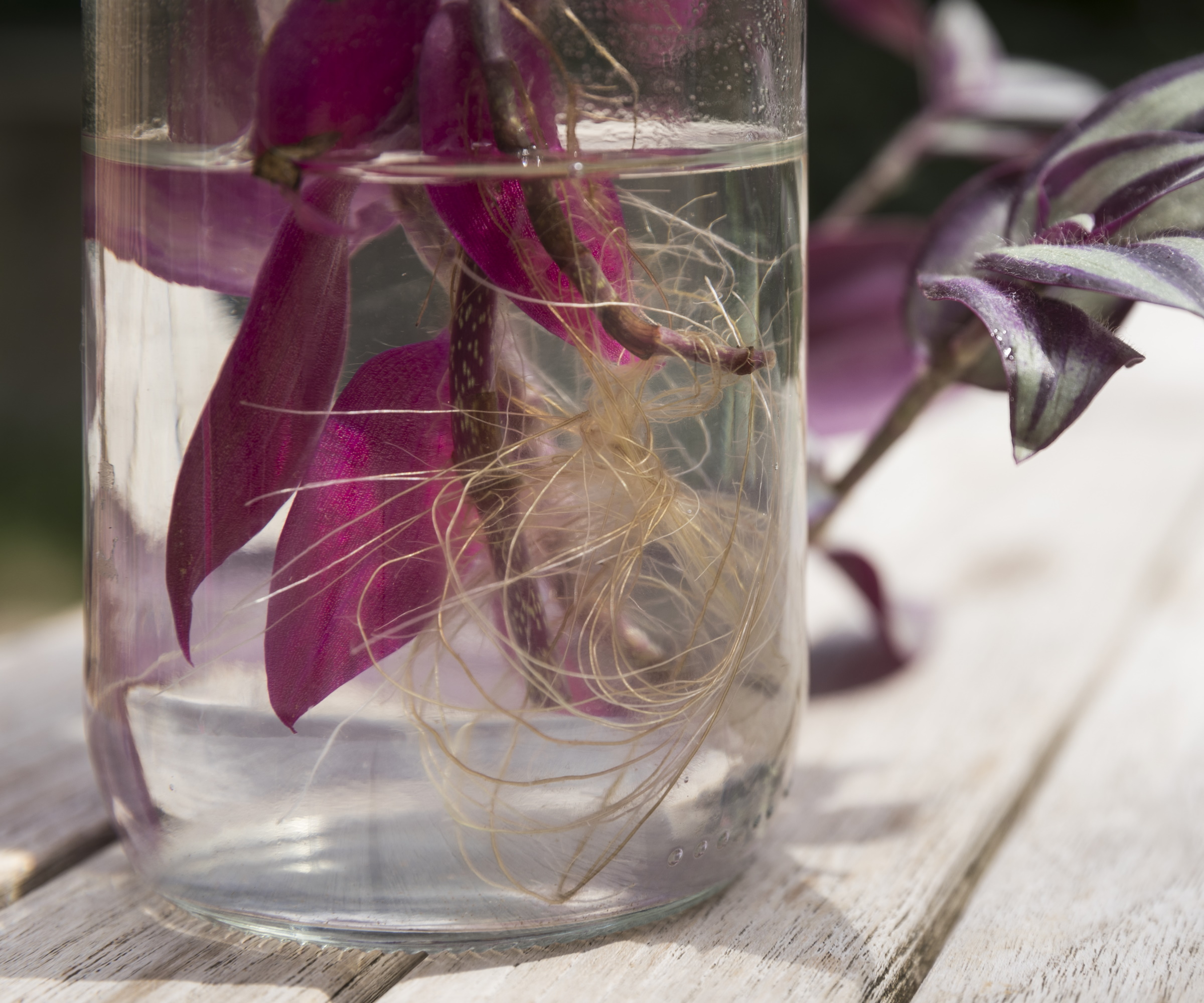
It's then as simple as placing your cutting into soil or water. Both methods work well, so it really just comes down to preference.
'No matter how you decide to propagate your cutting, it will sprout roots quickly,' says Lisa.
When propagating in water, ensure the bottom of the stem is well-submerged, paying particular attention to the leaf node where roots will develop, The same applies when putting your cutting in soil, ensuring the cutting is planted about an inch into the potting mix.
'When propagating in water and you see new roots about one to two inches long, you can transplant the cutting into a pot filled with fresh soil mix,' says Michael.
I personally choose to propagate my tradescantia plants in houseplant potting mix, available at Amazon. This is because I've noticed roots develop within just a week and growing them straight into a potting mix means you don't need to transplant them and can have a new houseplant almost instantly. For this reason, I also recommend propagating around 5 cuttings in one pot to create a fuller plant.
For both soil and water propagation, take care to keep your cuttings in a warm, bright spot. You could even try growing them in an indoor greenhouse to provide optimal conditions.
For soil propagation, ensure to top up moisture levels but don't overwater it so that it becomes soggy. You should likewise change the water in a water propagation to keep it fresh - forgetting to do so is a common water propagation mistake many make.
Once your cuttings have developed a root system and you've planted them up in their new pots, continue providing optimal care and they will thrive happily.
FAQs
Why is my tradescantia cutting not growing?
Propagating tradescantia plants from cuttings is simple to do. However, if you notice your tradescantia cutting isn't growing or has fallen over in its potting mix, it indicates that something isn't quite right. It could be that your cutting doesn't have enough warmth or light, or it could be a moisture issue.
'Once you see new roots about one to two inches long, after a few weeks, you can transplant the cutting into a pot filled with fresh soil mix,' says Lisa Eldred Steinkopf, houseplant expert at The Houseplant Guru.
'The same thing can happen in potting mix, but you won’t be able to see it. The stem cutting will fall over and that will be the indication that the cutting has rotted. If that happens, cut the end again and place it back in fresh potting mix,' she adds.
Can you propagate a tradescantia by division?
Although it's easy enough to grow tradescantias from cuttings, you might also choose to divide your existing tradescantia plant to multiply it. Simply remove it from its pot, clear away excess soil so that you can access the root ball and use your hands to gently divide it. You should ensure each new plant has a healthy root system and plenty of stems and shoots. Then grow each plant in its own pot and provide optimal care going forward.
I love to propagate my tradescantia plants from cuttings because it's so easy and quick to do. In just a few steps you can have more of these beautiful plants and your existing one will also continue to grow.
Discover more fast-growing indoor plants to try propagating and quickly turn your home into an indoor jungle.







